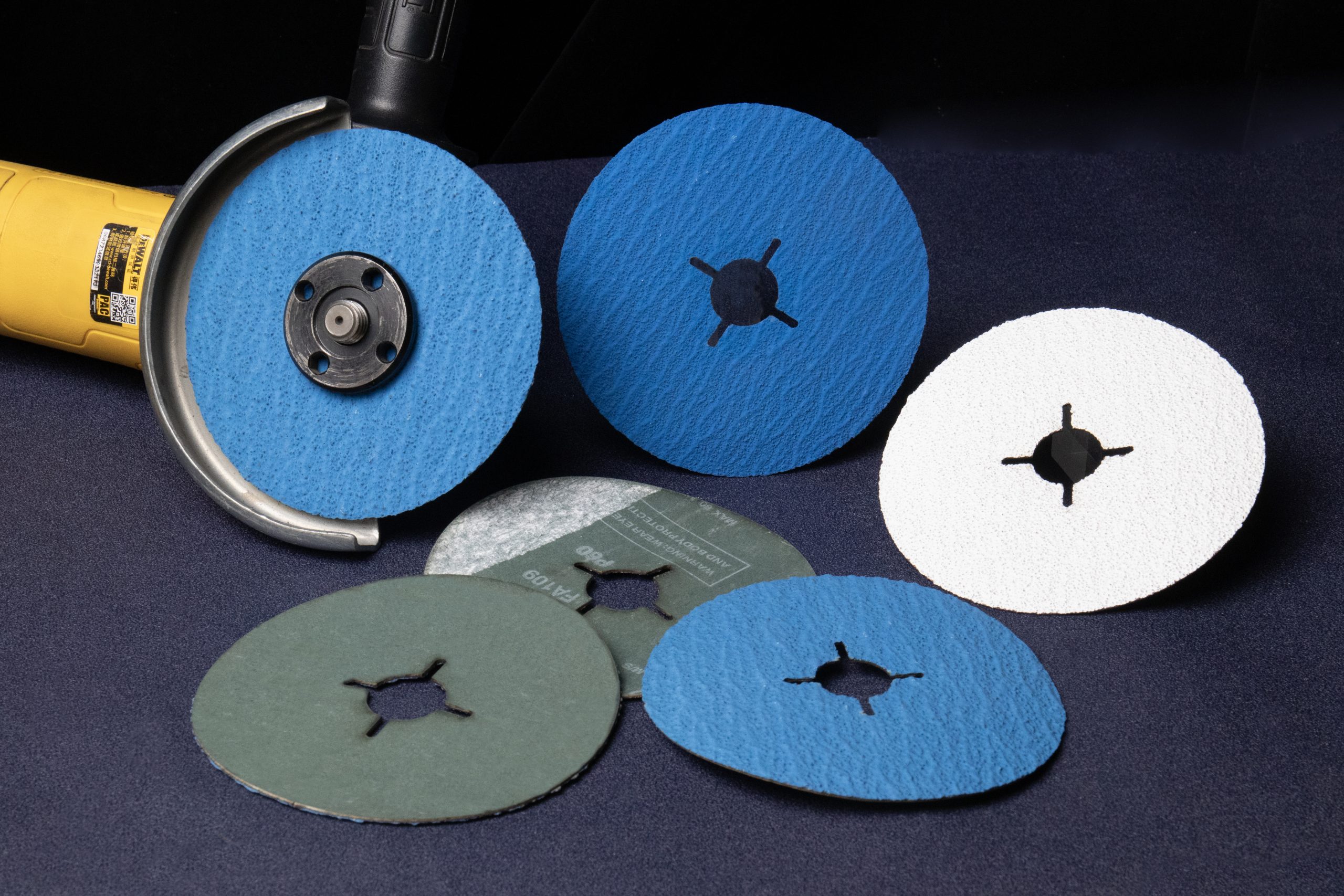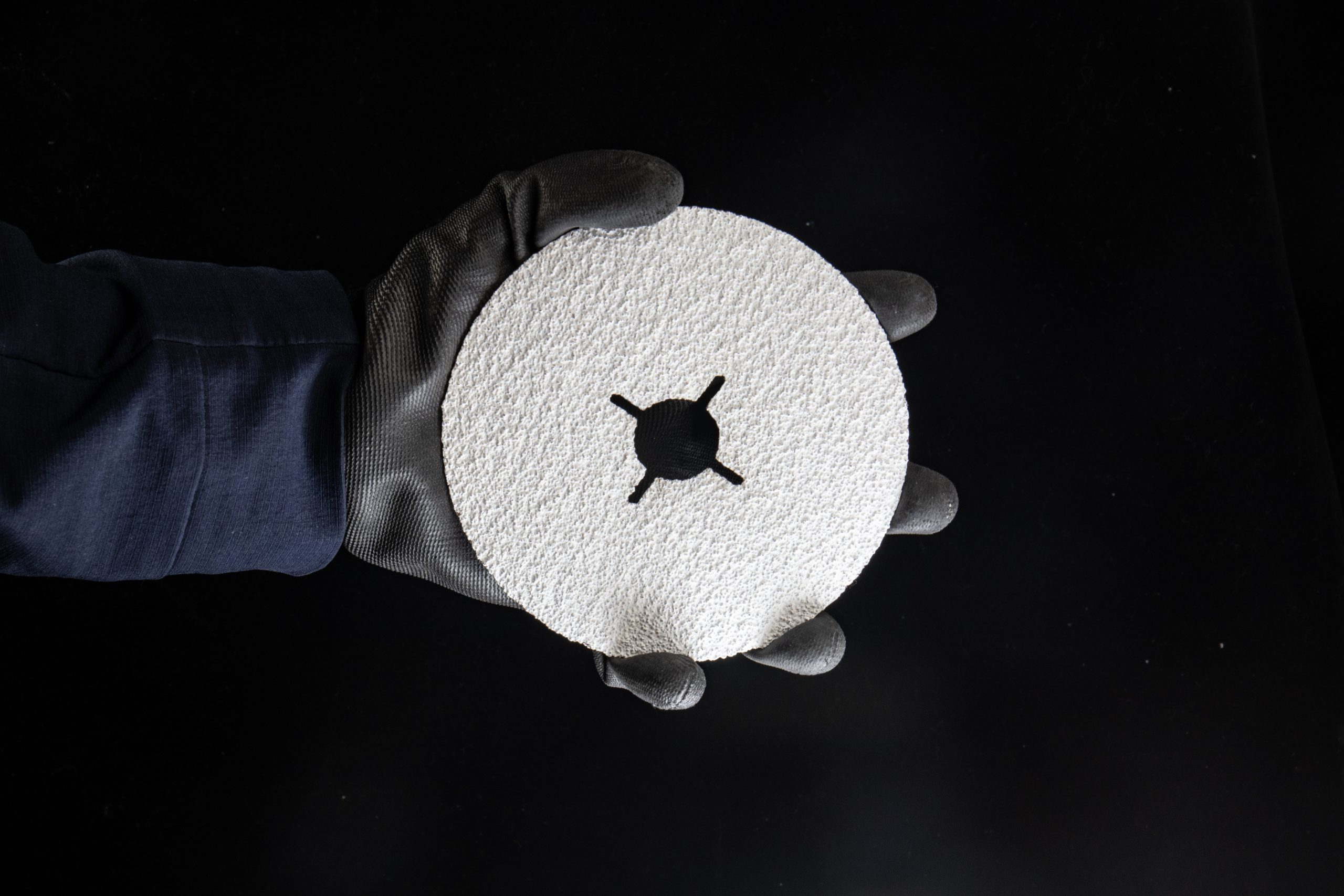Resin fiber discs are a popular choice in the realm of abrasive tools, widely used in various industries for grinding, polishing, and surface finishing applications. These discs are known for their durability, versatility, and efficiency, making them an essential component in both professional and DIY settings. In this article, we will delve into the specifics of resin fiber discs, exploring their composition, types, and applications.
Understanding Resin Fiber Discs
Resin fiber discs are abrasive tools composed of a stiff fiberboard backing, which is coated with a layer of resin and abrasive grains. The resin serves as a bonding agent, ensuring that the abrasive grains remain attached to the disc, even under high-pressure applications. The combination of the sturdy fiberboard and the strong resin bond results in a disc that can withstand significant wear and tear while maintaining its abrasive properties.
The primary function of resin fiber discs is to remove material from a surface, whether it’s metal, wood, or another material. They are commonly used for tasks such as deburring, blending, grinding, and finishing. The performance of these discs can vary based on the type of abrasive grain used and the specific application for which they are designed.
Key Components of Resin Fiber Discs
- Backing Material: The backing is typically made from vulcanized fiber, which is a type of stiff paperboard. This material is chosen for its strength and flexibility, providing a stable base for the abrasive grains.
- Resin Bond:The resin used in these discs is usually a phenolic resin, known for its durability and ability to withstand high temperatures. This resin binds the abrasive grains to the backing, ensuring longevity and consistent performance.
- Abrasive Grains:The type of abrasive grain used can significantly affect the disc’s performance. Common abrasive grains include aluminum oxide, zirconia alumina, and ceramic alumina. Each type of grain has its own unique properties, making it suitable for different applications.
Types of Resin Fiber Discs
Resin fiber discs can be categorized based on the type of abrasive grain used. Here are some of the most common types:
- Description:Aluminum oxide is a widely used abrasive grain known for its hardness and durability. It is suitable for a variety of applications, including grinding, sanding, and polishing.
- Applications: These discs are ideal for general-purpose use on materials such as steel, stainless steel, and wood. They are commonly used for tasks like rust removal, paint stripping, and surface preparation.
- Advantages:Aluminum oxide discs are cost-effective and offer a good balance between performance and longevity.
- Description:Zirconia alumina is a tough, durable abrasive grain that self-sharpens during use. This self-sharpening property allows the disc to maintain its cutting efficiency over time.
- Applications:Zirconia alumina discs are well-suited for heavy-duty grinding and cutting applications on materials like stainless steel, carbon steel, and other tough metals.
- Advantages:These discs offer a longer lifespan and higher efficiency compared to aluminum oxide discs, making them a popular choice for industrial applications.
- Description:Ceramic alumina is an advanced abrasive grain known for its exceptional hardness and heat resistance. It is engineered to provide a high level of performance in demanding applications.
- Applications: Ceramic alumina discs are ideal for aggressive grinding and finishing on hard metals such as titanium, high-nickel alloys, and hardened steel.
- Advantages: These discs offer superior cutting performance and longevity, making them suitable for the most challenging applications. They are often used in aerospace, automotive, and metal fabrication industries.
- Silicon Carbide Resin Fiber Discs:
- Description: Silicon carbide is a very hard and sharp abrasive grain. It is typically used for applications requiring a fine finish.
- Applications:Silicon carbide discs are suitable for working on non-ferrous metals, glass, ceramics, and stone. They are commonly used for polishing and finishing tasks where a smooth surface is desired.
- Advantages: These discs provide a high-quality finish and are excellent for use on hard, brittle materials.
Choosing the Right Resin Fiber Disc
Selecting the appropriate resin fiber disc for a specific application involves considering several factors:
- Material Being Worked On: Different abrasive grains are suitable for different materials. For instance, zirconia alumina discs are ideal for tough metals, while silicon carbide discs are better for glass and ceramics.
- Type of Work: The nature of the task—whether it’s heavy-duty grinding, light sanding, or fine polishing—will dictate the choice of disc. Heavy-duty tasks generally require tougher, more durable grains like zirconia alumina or ceramic alumina.
- Desired Finish:For applications requiring a smooth, fine finish, silicon carbide or aluminum oxide discs may be more appropriate.
- Durability and Cost: While high-performance discs like ceramic alumina may have a higher initial cost, their longevity and efficiency can offer better value in the long run for demanding applications.
Applications of Resin Fiber Discs
Resin fiber discs are versatile tools used across a wide range of industries. Some of the most common applications include:
- Metal Fabrication: In metal fabrication, resin fiber discs are used for grinding welds, removing rust and paint, and preparing surfaces for further treatment. Zirconia alumina and ceramic alumina discs are particularly popular in this industry due to their durability and cutting efficiency.
- Automotive: In the automotive industry, these discs are used for tasks such as bodywork, paint removal, and surface preparation. Aluminum oxide discs are often used for general-purpose sanding, while ceramic alumina discs are chosen for more demanding tasks.
- Woodworking:Resin fiber discs are employed in woodworking for sanding and finishing wooden surfaces. Aluminum oxide discs are commonly used due to their versatility and ability to produce a smooth finish.
- Aerospace: In the aerospace industry, the high demands for precision and quality necessitate the use of ceramic alumina discs for grinding and finishing high-strength materials like titanium and high-nickel alloys.
- Construction:In construction, these discs are used for tasks such as cutting and grinding concrete, stone, and other building materials. Silicon carbide discs are often chosen for these applications due to their effectiveness on hard, brittle materials.
Safety Considerations
When using resin fiber discs, safety is paramount. Here are some essential safety tips to keep in mind:
- Wear Protective Gear:Always wear appropriate personal protective equipment (PPE), including safety glasses, gloves, and hearing protection, to protect against flying debris and noise.
- Check Equipment: Ensure that the disc is properly mounted on the tool and that the tool itself is in good working condition. A poorly mounted disc can shatter, posing a serious risk.
- Follow Manufacturer’s Instructions: Always adhere to the manufacturer’s guidelines for speed and pressure. Exceeding the recommended speed or applying excessive pressure can cause the disc to break or wear out prematurely.
- Use Guards: Make sure the tool’s guards are in place and properly adjusted to provide maximum protection.
Conclusion
Resin fiber discs are indispensable tools in many industries, valued for their versatility, durability, and efficiency. Whether you’re working with metals, wood, or other materials, choosing the right type of resin fiber disc can significantly impact the quality and speed of your work. By understanding the different types of abrasive grains and their applications, you can select the most suitable disc for your specific needs, ensuring optimal performance and safety.


